When we think of putu mayam, we imagine mom-and-pop Indian food stalls that happen to sell the snack as one of its various offerings for breakfast. But at That Putu Mayam Stall, things look decidedly more modern: from its minimalist-hip signboard to the rather bare setup. And then there’s its menu with just one item: putu mayam, of course.
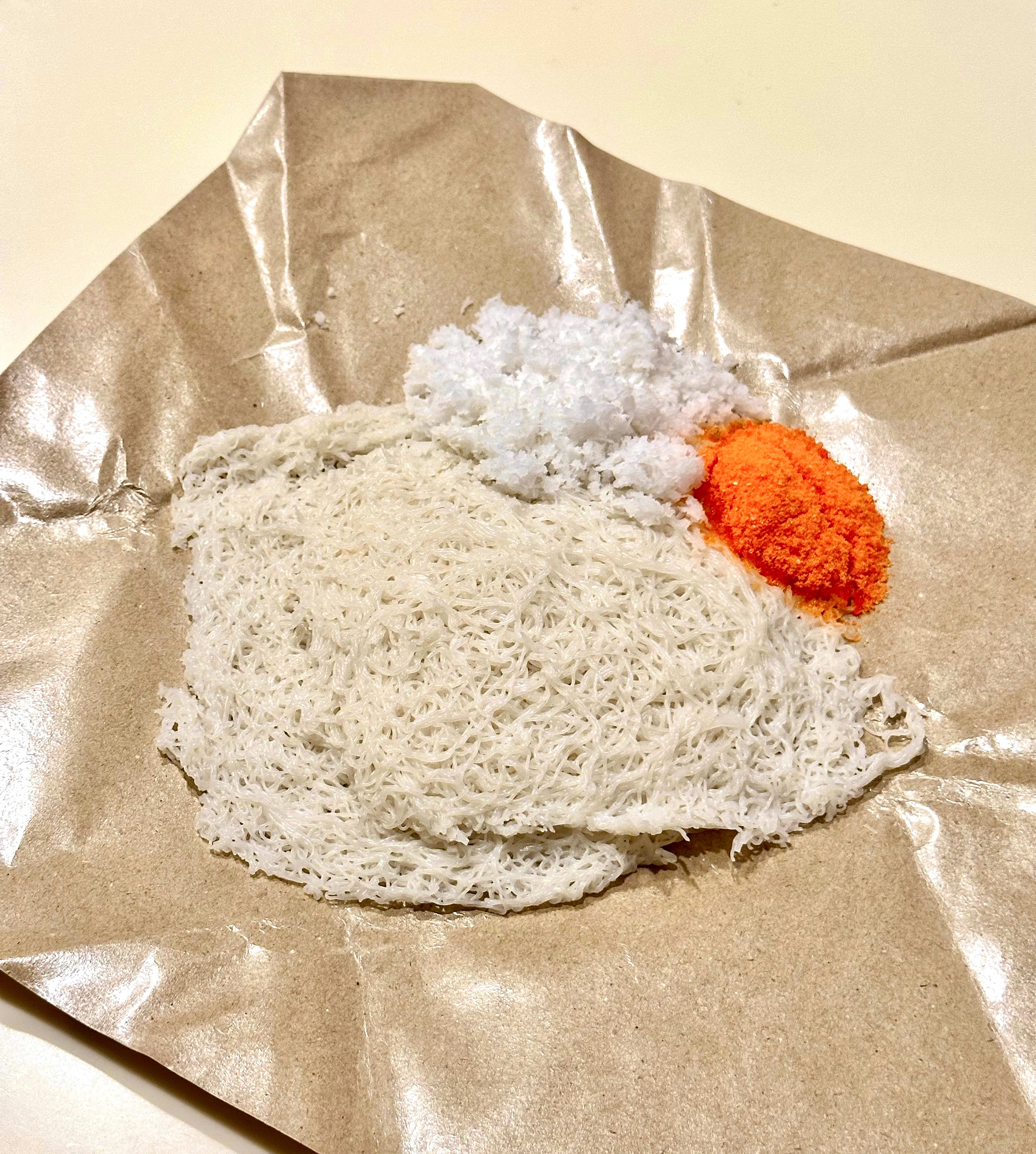
The lone hawker behind the stall selling steamed rice flour noodles, freshly grated coconut, and jaggery sugar (unrefined sweetener made from sugar cane juice or palm sap) in Bukit Merah Central Food Centre is equally low-key. Since That Putu Mayam Stall’s inception in 2023, 8days.sg has unsuccessfully tried to interview its owner, 45-year-old Eljin Tan. Until now. Why so shy?
“I wanted to stabilise my business first before speaking to any media,” he explains simply. But now, he’s ready to talk.
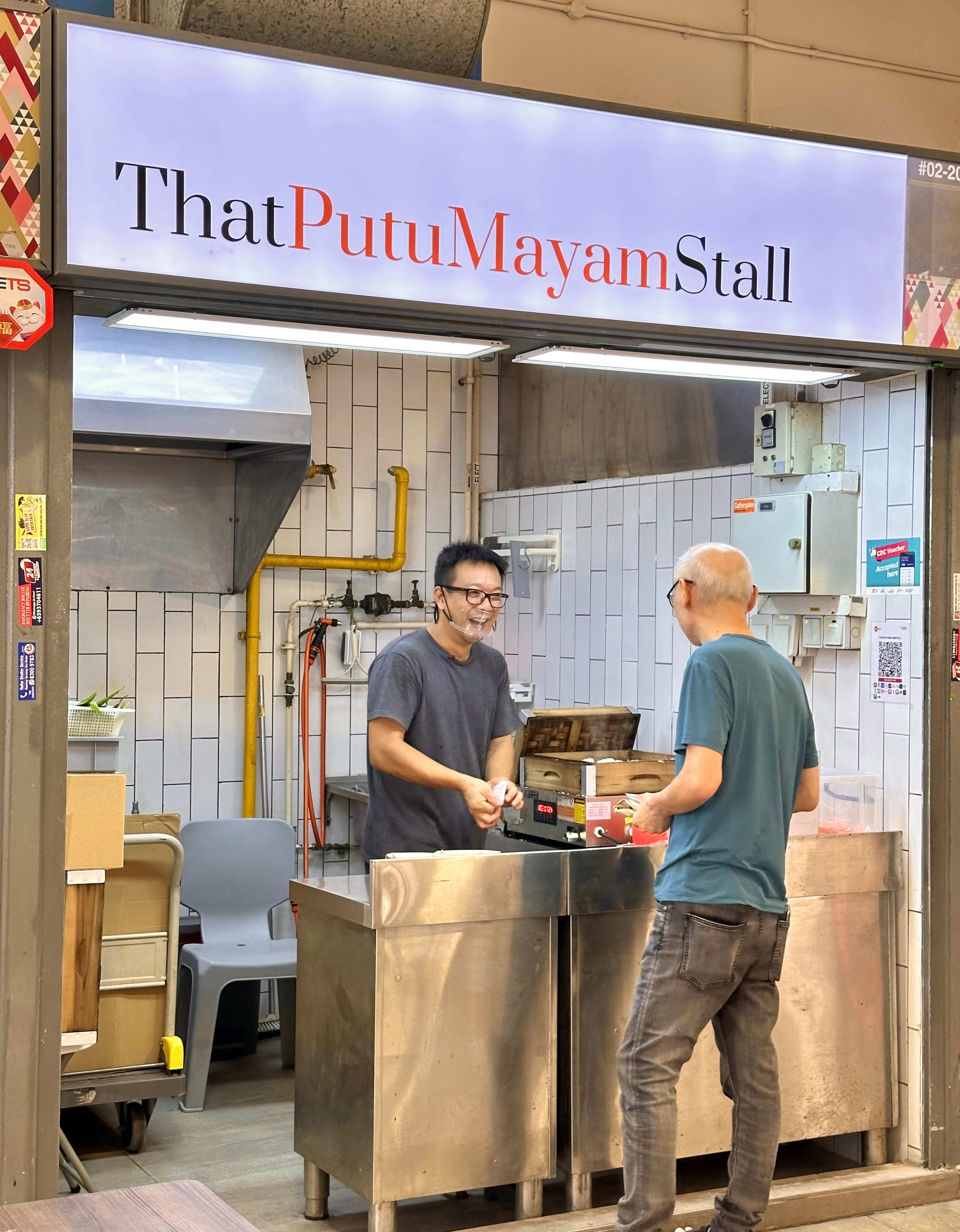
20 years in the film industry, until things got tough
Prior to setting up his biz, Eljin spent nearly 20 years working in the film industry. After graduating from LASALLE College of the Arts in 2001, he worked as a freelance gaffer and key grip. A gaffer is the chief lighting technician on a film or television set, while a key grip leads the team that operates the supporting equipment for cameras and lights.
He has worked behind the scenes as gaffer for Nathan Hortono’s Everything I Am music video, several episodes of Mediacorp drama Tanglin, and as key grip for Anthony Chen’s movie Wet Season.
Why the dramatic switch from lighting up sets to steaming coconut? “The film industry in Singapore is shrinking. At least 20 to 30 percent of freelance production crew have moved on [to other jobs],” Eljin explains. “We used to have a healthy flow of projects every year but it has really reduced. I know people who went to drive [for] Grab or do car sales. There are still filming jobs around, just that the amount has drastically reduced.”
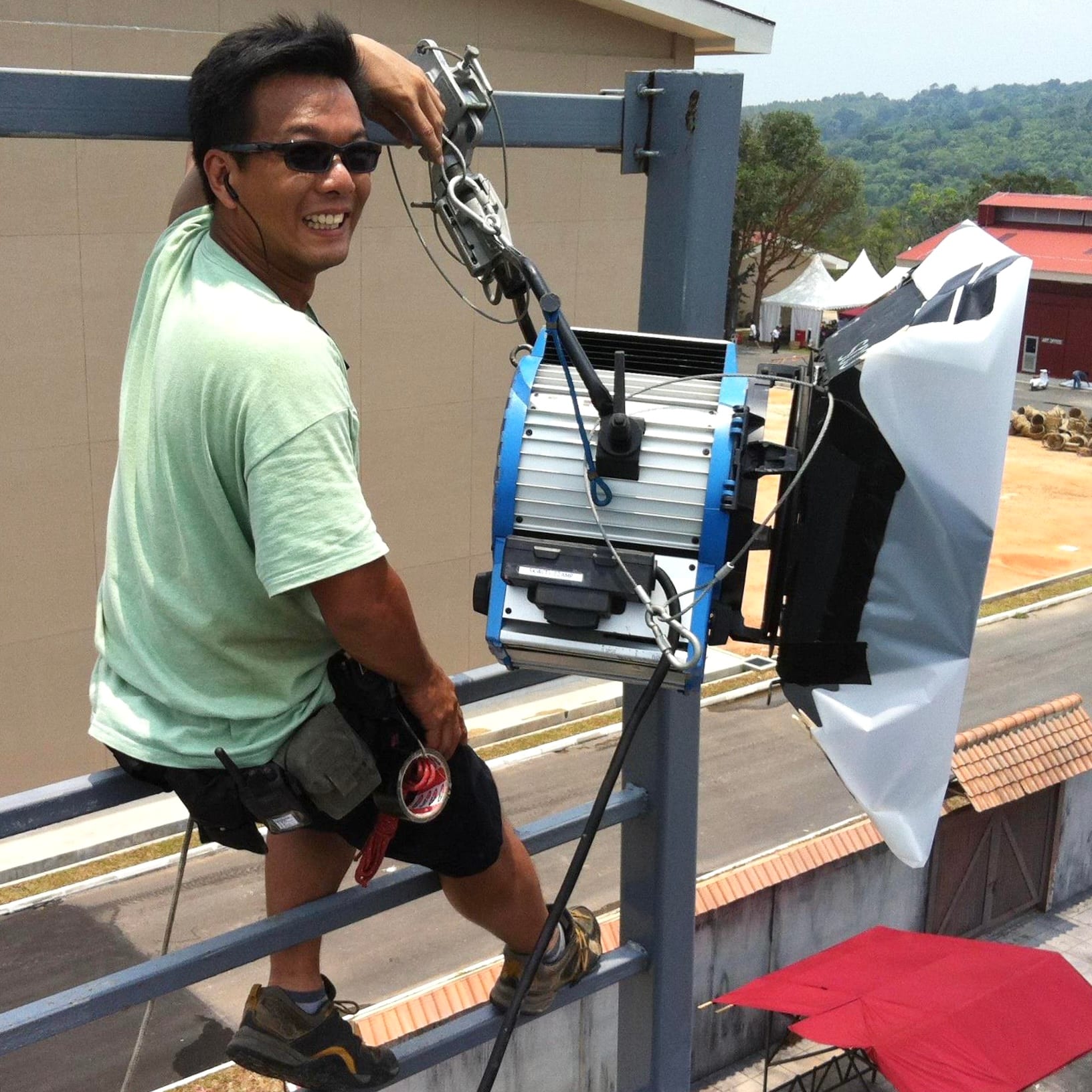
Photo: Eljin Tan
Became hawker as a matter of survival
“At the end of the day, it’s the fittest that survives. That’s why the younger crew can survive because they don’t have as many commitments. I was the same as them twenty years ago, I could just work on a few projects to cover my expenses as I lived with my parents and just partied with my friends,” he elaborates.
Becoming a hawker was Eljin’s way of taking charge of his career. “I work for myself now, I answer to myself,” he says.
For him, it was also about survival. “When I was freelancing [in film] and the market was not doing well, I had to look for an alternative income stream,” Eljin tells 8days.sg. “Things fell into place when I bid for this hawker stall, and the rental price was right.”
Eljin is married with no kids and has another side hustle that he tells 8days.sg about off the record.
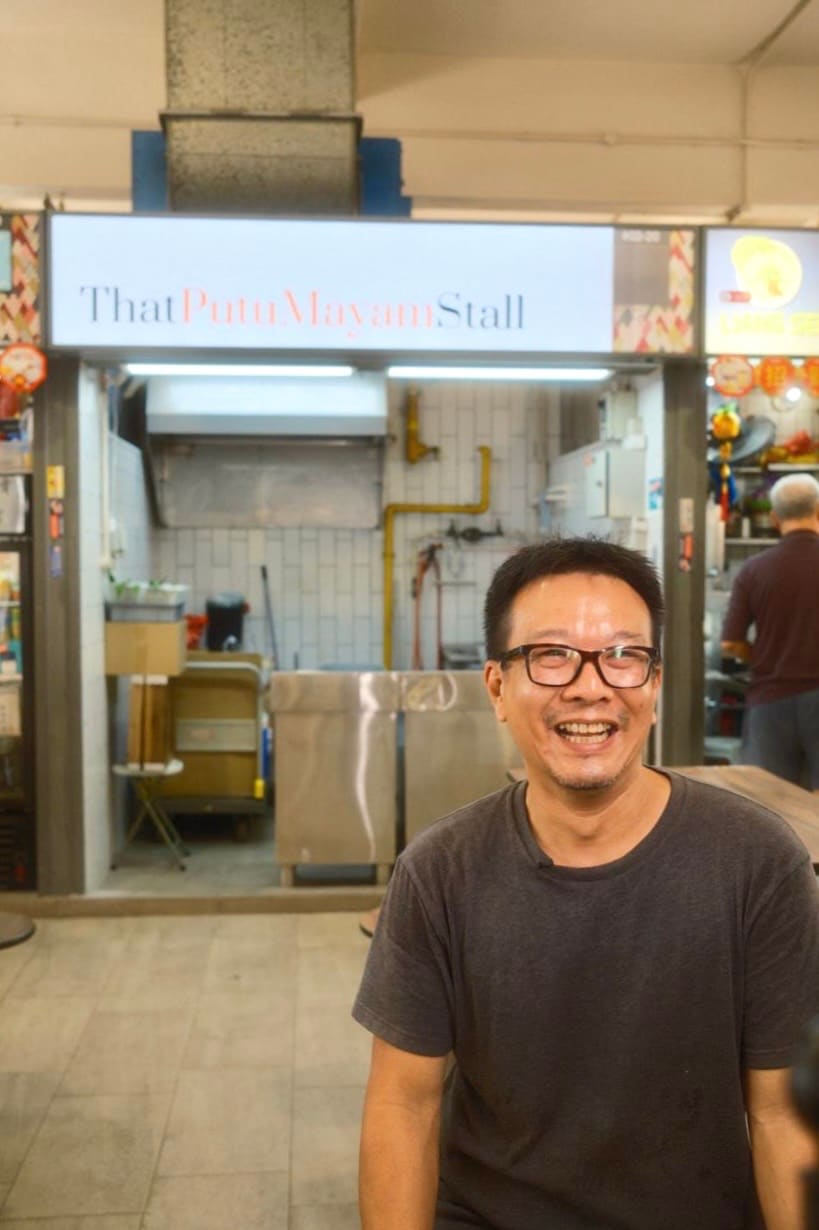
Keeping an old-school snack alive
Putu mayam is very much a part of his youth. “Putu mayam is a childhood snack, we used to eat it when we were kids, but now, it’s getting harder to find in Singapore. So I decided to open a stall selling it,” he shares with 8days.sg.
Why the name That Putu Mayam Stall? “I was thinking of something that’s easy for people to remember. It actually started as a joke. When someone asks, ‘Where do you get putu mayam from?’ The answer is often: ‘From that putu mayam stall’,” he laughs.
While working on Channel 5’s television series Tanglin and Kin, Eljin often spent time at Infinite Studios on Portsdown Road, a ten minute car ride from Bukit Merah Central Food Centre. On those mornings, he would grab breakfast there before work. So, even though he lives in Bishan, when a stall became available at the food centre, he thought: ‘I’m already quite familiar with the place, why not give it a try?’
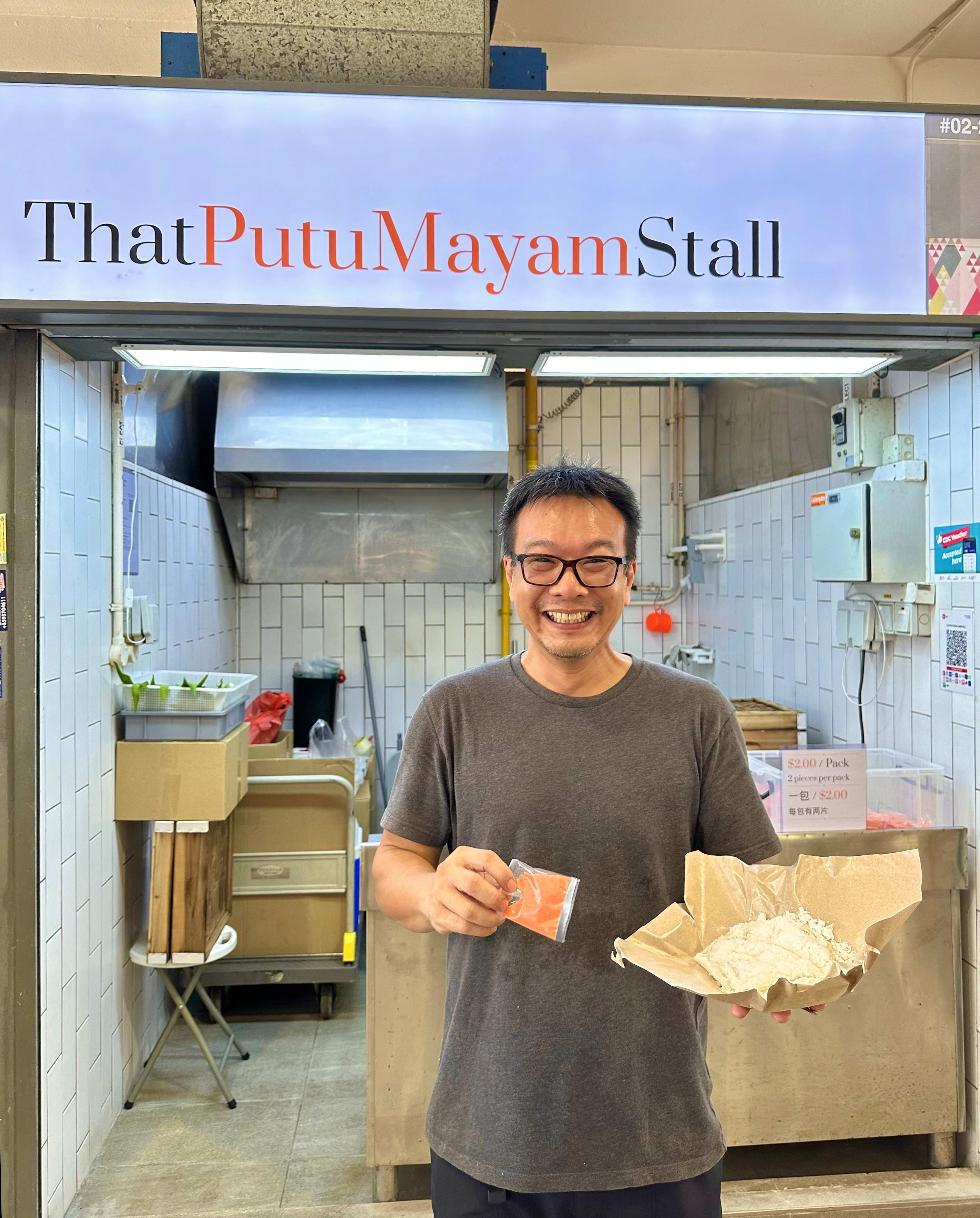
Selling just one dish possible ’cos of reasonable rent
However, selling just one snack is not easy. “Basically, it’s make it or break it, as there’s just one dish,” Eljin admits. “I managed to bid for a stall under NEA at a price point where I can [afford to] sell one item. If not, I don’t think I’d be able to open a hawker stall like this.” He prefers not to disclose how much rent he pays.
Why doesn’t he sell more dishes to increase sales? Eljin admits: “I didn’t think that far. Maybe in the future I’ll add more items, but for now, it’s just That Putu Mayam stall. Basically, I don’t know what else to sell yet and adding more items means more logistics.” He shares that he’s able to make things work for now by keeping his expenses low and lifestyle simple.
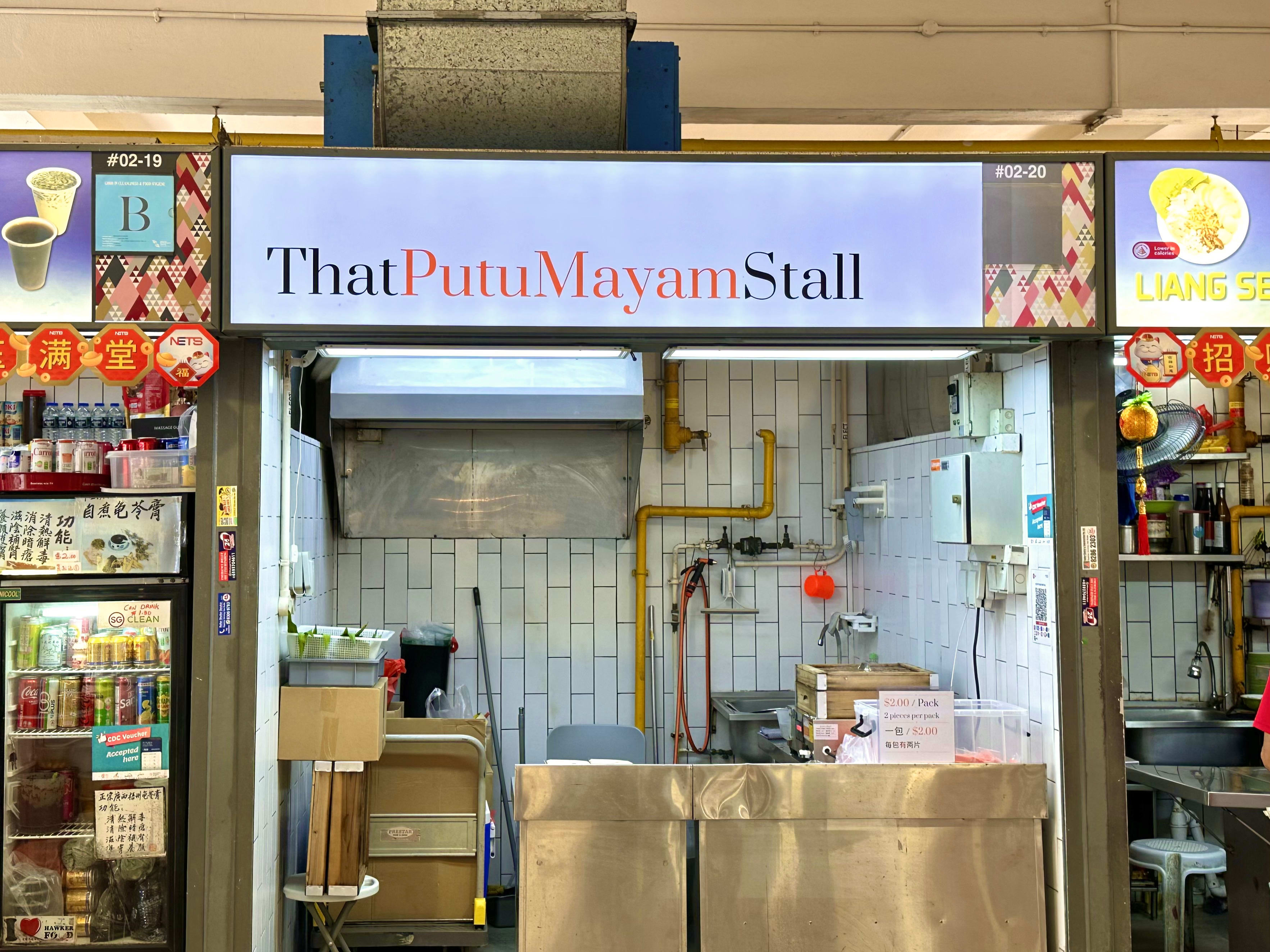
Still works in film occasionally
Though he took a step back from the film industry to enter the hawker world, Eljin hasn’t cut ties with the former completely. He still takes on projects occasionally when something suitable comes along, closing his stall for days when that happens.
Does he miss his old job? “Definitely. The film industry is always very exciting, [even with its] long hours. Being a hawker is more mundane and routine, but it has its perks. You get to meet people from all walks of life, just like in the film industry, [except] this is indoors so I can stay in just one location,” he says.
He recalls a surprise visit from local actress and model Sheila Sim, whom he had worked with in the past. She stumbled upon his stall and bought some putu mayam. “Her husband liked it and her kids called it putu yum yum”, Eljin laughs.
The career change came with a pay cut, but still proved a more stable income source for Eljin. “As a freelance film crew member, my income fluctuated a lot. As a putu mayam seller, it was difficult in my first six months, but as I built my business, it slowly translated into [something more] stable,” he shares.
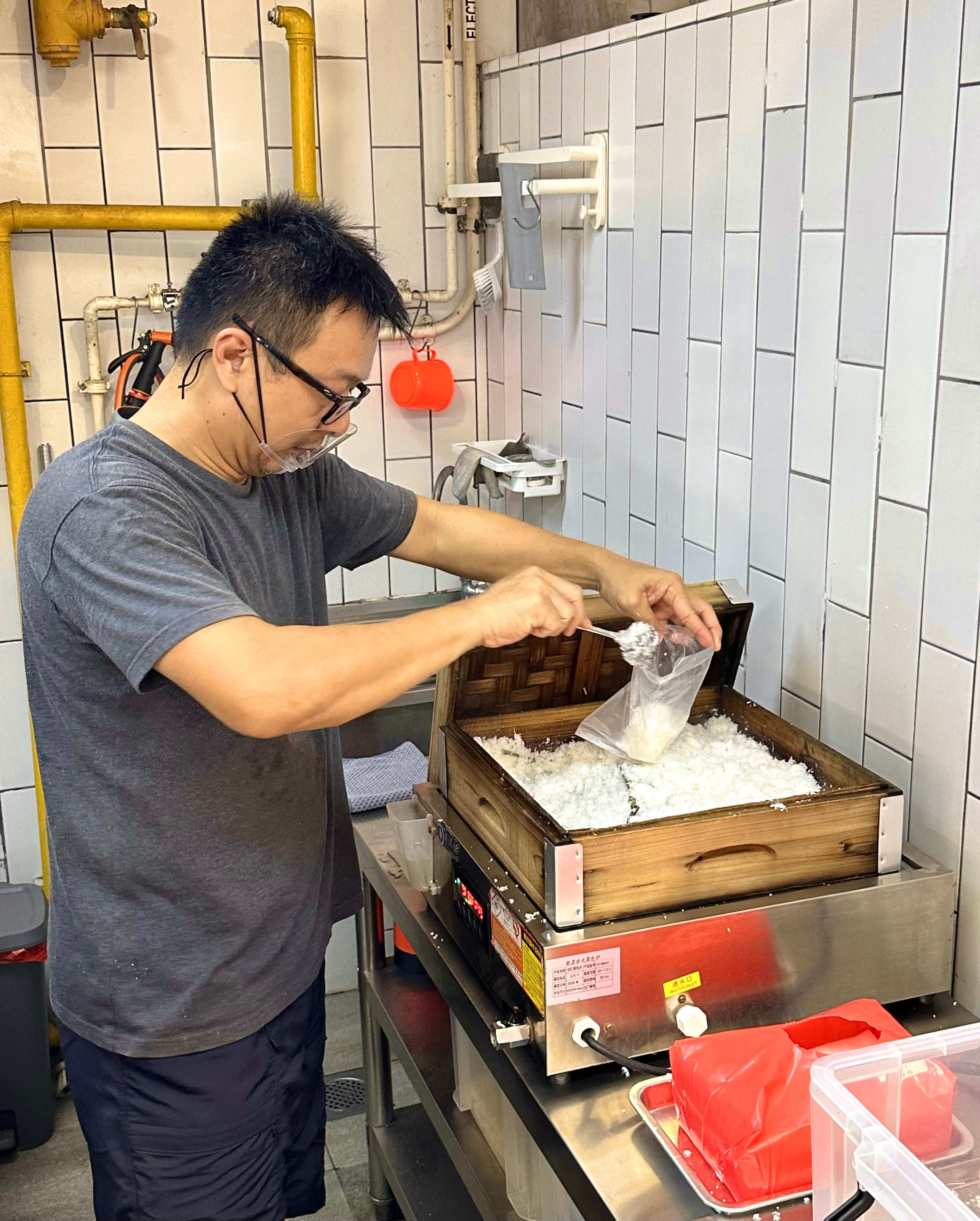
Not made from scratch
Eljin doesn’t make his putu mayam from scratch, instead he buys it from a supplier. To serve, he warms up the grated coconut with fresh pandan leaves in a wooden steamer. For $2, you get two discs of rice flour noodles, a packet of that nostalgic orange sugar, and a heap of fresh coconut.
We suppose it’s ’cos cooking it from scratch is quite labour-intensive — the South Indian delicacy is made by pressing rice flour dough through a mold to form fine strands, which are swirled into discs and steamed. Sometimes, pandan leaves are added for fragrance. Known in English as string hoppers for their resemblance to thin strings.
He closes shop at 1pm to ensure the putu mayam stays fresh, so his daily stock is limited. “Once I finish, I’ll close up. There are days if I finish early, I will close before lunchtime because I open at 7am,” he adds.
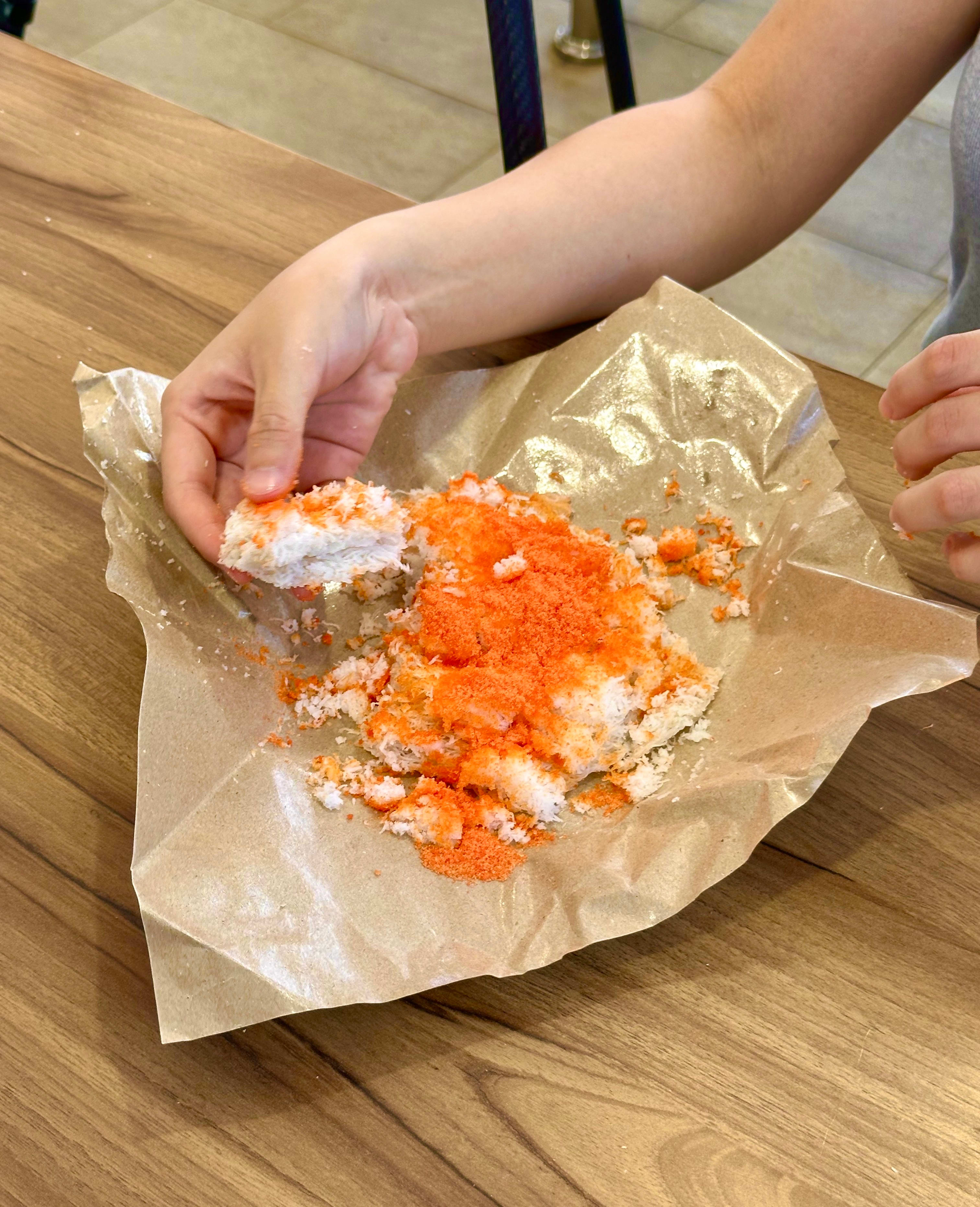
Putu Mayam, $2
The noodles are light and tender, while the sugar’s sweetness balances the nutty richness of the coconut, coming together to make a simple yet delicious snack. No cutlery is provided, as putu mayam is traditionally eaten with your hands.
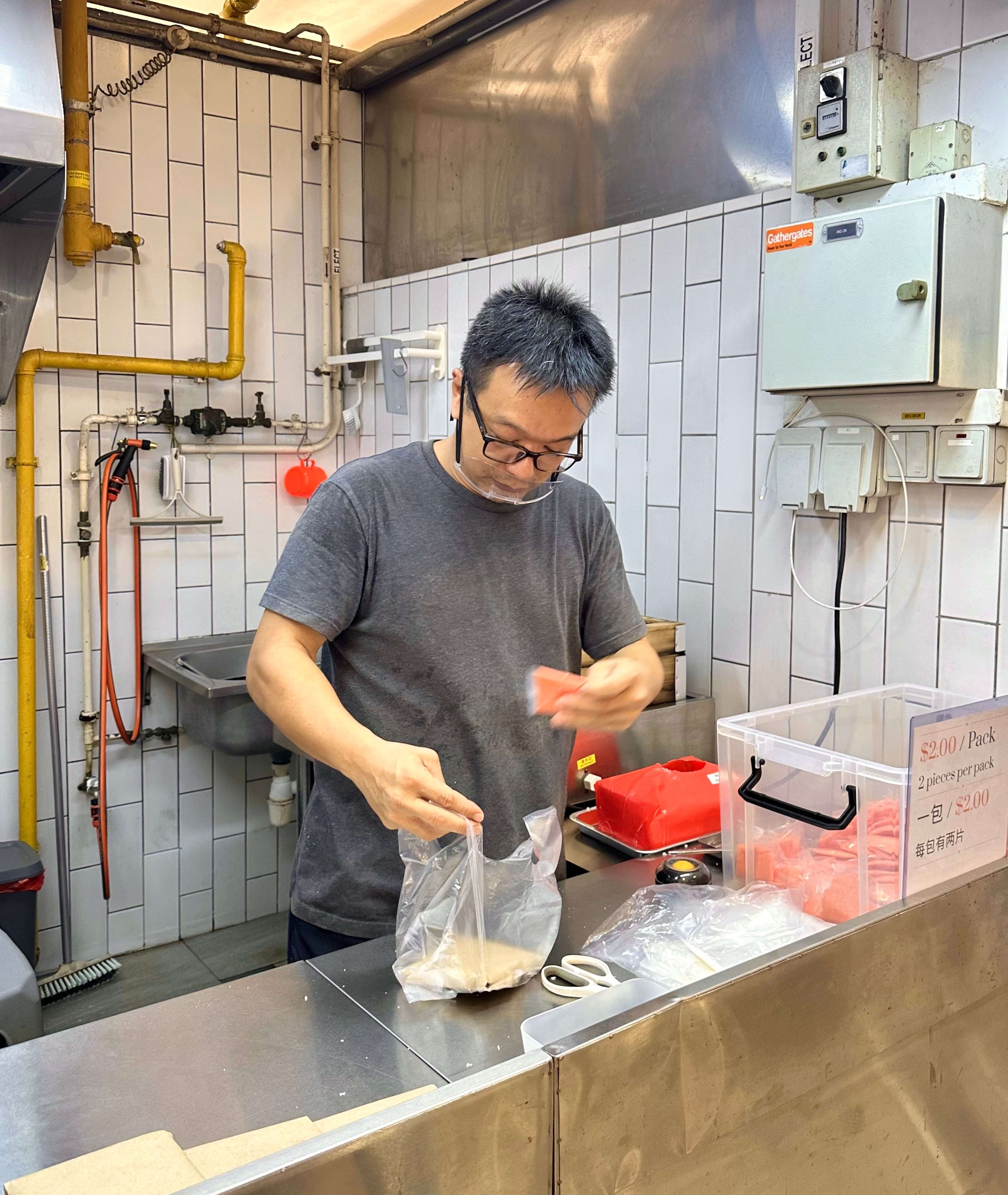
Rising food costs a concern
What’s his long-term plan for this stall? “Rising food costs are definitely an issue. Even sugar and coconut prices have gone up. Many other stalls [in the hawker centre] have increased their prices. I’m just maintaining my current price point so older folks still get to enjoy my putu mayam. If you ask me when I’m going to increase prices, I don’t know, but I won’t say that will never happen. I have to survive,” he elaborates.
“Many of my customers are elderly because it’s a nostalgic food for them,” Eljin shares. “Once, there were two sisters, both with white hair, sitting together, unwrapping their putu mayam and eating it with a cup of coffee. If I had to guess, they were probably thinking about back when they were kids.” He adds that he gets young customers sometimes, as well as parents who want their children to try putu mayam so they can share a taste of their childhood.
Does he see himself being a hawker long-term? “In the current [challenging F&B] climate, being a hawker is very tiring. Of course, if you compare my work with other hawkers [who cook their dishes from scratch], mine is a lot easier.”
How’s business now? “This is my second year, so I’ve managed to survive. Next year is the end of my stall’s three-year lease, so I have to see what the NEA rental rate is going to be [and then decide on the stall’s future],” Eljin shares.
“I’ll just see how far this takes me,” he says with a toothy grin.
That Putu Mayam Stall is located at #02-20 Bukit Merah Central Food Centre, 163 Bukit Merah Central, S150163. Open Tue to Sat, 7am-1pm. More info via Instagram.
Photos: Simone Chuah
Top In Asia





